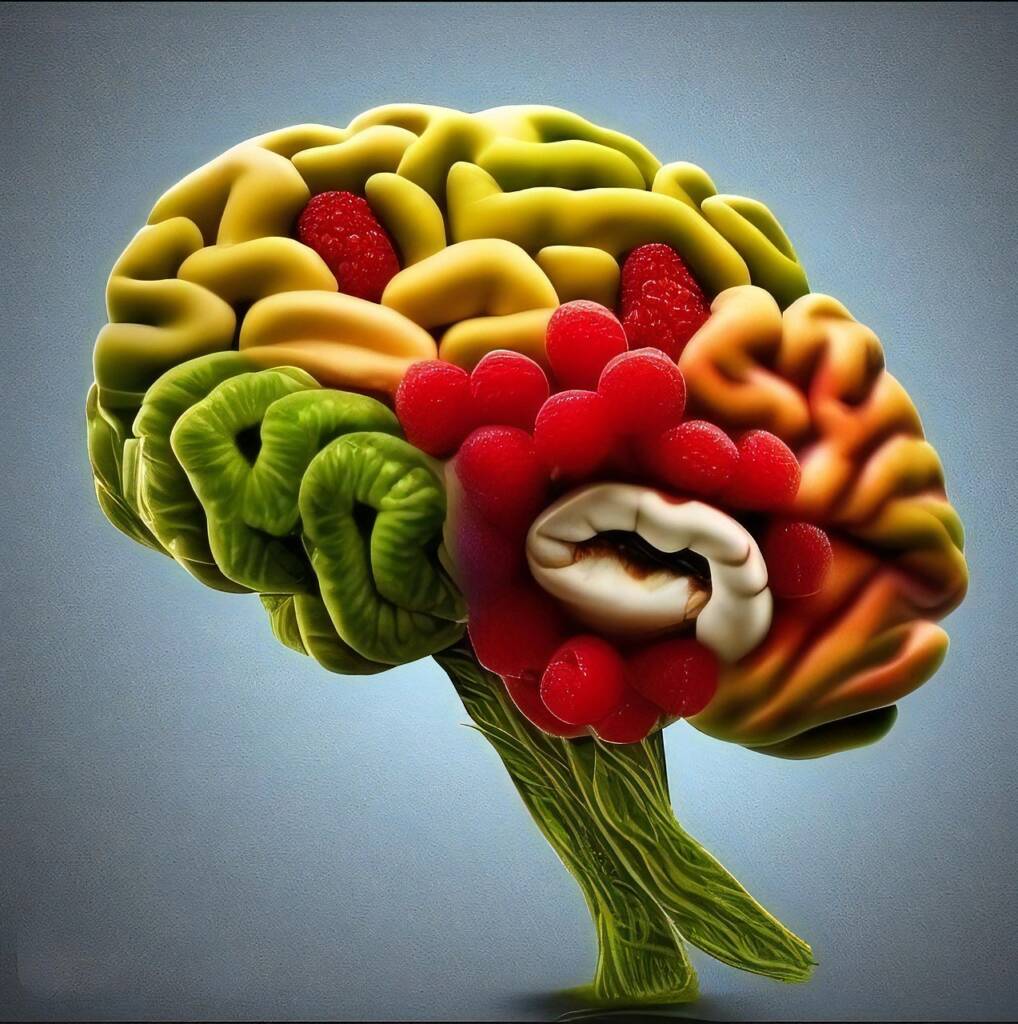Introduction to Neuroplasticity:
The brain is a remarkable organ known for its ability to adopt, learn and rewire itself throughout the life. The phenomenon called neuroplasticity is the brain’s capacity to change and recognize its structure and function.
While ones believe that the brain structure was static, we now understand that it has an incredible ability to adopt to new experiences, challenges and even injuries.
In this article, we will explore the fascinating world of neuroplasticity, discussing what it is, how it works and 4 practical strategies to harness this power to improve your cognitive abilities, mental health, and overall well-being. To know more on brain health, read this article, https://sparklinglifestyle.in/brain-health/#
Understanding neuroplasticity:
Neuroplasticity known also known as brain plasticity, refers to the brain’s ability to adopt and reorganize itself in response to various stimuli. This can include learning new information, adapting to injuries, or even compensating for age related changes.
In addition, It is important to note that neuroplasticity occurs at multiple levels from changes in individual neurons to broader alternations in brain circuitry.
Two primary forms of neuroplasticity are structural plasticity and functional plasticity. Such as,
Structural plasticity: This aspect involves physical changes in the brain’s structure for instance. It can entail the growth of new neurons or the formation of new synaptic connections between existing neurons. Structural plasticity plays a vital role in learning and memory.
Functional plasticity: This type of neuroplasticity related to the brain distributing functions across different areas. If one area of the brain is damaged or compromised, other regions may take over those functions. This is particularly evident in recovery from brain injuries.

How neuroplasticity works:
Neuroplasticity is a complex process influenced by various factors and mechanisms. Key elements involved in this phenomenon include: For example,
Synaptic plasticity: This involves the strengthening or weakening of connections between neurons known as synapses. When we learn new things, the synaptic connections related to that knowledge become stronger, making it easier to recall or apply that information.
Neurogenesis: The creation of new neurons or neurogenesis, primarily occurs in the hippocampus, a region crucial for learning and memory. Exercise, sleep, and learning can promote the production of new neurons.
Experience-dependent plasticity: The brain rewires itself based on your experiences. For instance, if you practice a musical instrument, the brain regions responsible for motor skills and auditory processing may undergo changes to support your improved musical abilities.
Hebbian plasticity: Often summarized by the phrase “cells that fire together, wire together,” Hebbian plasticity suggests that synapses become stronger when they are repeatedly activated in tandem.
4 habits to rewire the brain:
Understanding neuroplasticity opens existing possibilities for personal growth, cognitive and enhancement and mental health improvement. Here are 4 practical ways to increase the power of neuroplasticity. Such as,
- Focusing on what you control:
Focusing on what you can control is a powerful way to rewire your brain and improve your overall well-being. When you concentrate on factors, you have influence over. You can reduce stress, boost resilience, and promote positive changes in your life. Here are key areas to focus on: For example,
Thoughts and beliefs: Your thoughts shape your perception of the world. Practice cognitive restructuring to challenge and change negative thought patterns. Replace self-limiting beliefs with positive and empowering ones.
Emotions: Learn Emotional regulation technique to manage your emotional responses effectively. This can involve mindfulness, deep breathing or seeking professional guidance when needed.
Habits: Identify habits that no longer serve you and replace them with positive ones. This could include adopting a new regular exercise routine, a healthier diet, or improved time management.
Stress management: Recognize stressors in your life and develop strategies to cope with them. Techniques like meditation, progressive muscle relaxation or journaling can help manage stress effectively.
Self-care: Prioritize self-care activities that promote mental and physical wellbeing, such as adequate sleep, proper nutrition, and exercise.
Personal relationships: For example, Nurture and maintain healthy relationship by setting boundaries, communicating effectively, and choosing to surround yourself with supportive individuals.
Goals and aspirations: Set realistic and achievable goals. Break them down into smaller, manageable steps. This provides a sense of control and accomplishment.
Time management: Organize your time effective efficiently to reduce stress and increase productivity. Prioritize task and set clear goals for your daily weekly and long-term schedules.
Learning and growth: Continuously seek opportunities for learning and self-improvement. Acquiring new knowledge and skills empowers you and promotes brain plasticity.
Health and wellness: Take charge of your physical health through a regular checkup, exercise, balanced diet, and preventive measures.
Financial management: Create a budget and financial plan to manage your money effectively. Reducing financial stress and significantly impact your well-being.
Environmental factors: Modify your physical environmental to create a more positive space for work, relaxation, and creativity.
- Meditate and mindfulness:
Meditation and mindfulness practices are powerful tools for rewiring the brain and enhancing your overall well-being. These practices center around being present in the movement, and they have been shown to have numerous benefits for mental and emotional health.
During meditation, it is possible to reduce the activity of amygdala, which is the brain’s emotional processing center, associated with fear and stress responses. By doing so, you can experience a greater sense of calm and emotional balance.
Meditation can have an impact on the cingulate cortex, a region of the brain associated with various cognitive and emotional functions, including attention, conflict, resolution, and empathy.
- Exercise daily:
Daily exercise has been associated with the production of new neurons in the brain, particularly in the hippocampus, a region crucial for learning and memory. This process supports the formation of new neural connections and can enhance cognitive function.
Exercise enhances blood circulation, which ensures that the brain receives an adequate supply of oxygen and nutrients. Improved blood flow supports the optimal brain function and can contribute to better mental clarity.
Physical activity stimulates the release of neurotrophic factors such as “brain derived neurotrophic factor’ (BDNF), which promote the growth survival and plasticity of neurons. These factors play a crucial role in wiring the brain and strengthening neural connections.
Regular physical exercise has been linked to improved cognitive function, including better memory, attention, and problem-solving skills. It can also slow down age related cognitive decline.
Exercise enhances brain plasticity by creating an environment conducive to learning and adaptation. This makes it easier for the brain to form and strengthen new neural connections.
- Continuous learning:
Learning new information or skills stimulates the growth of new neurons and the formation of new synaptic connections. This enhances the brain’s ability to adapt and rewire itself.
Moreover, Engaging in continuous learning exercises your memory. It encourages the brain to create and reinforce neural pathways associated with retaining and recalling information.
Learning diverse subjects or skills can improve cognitive flexibility, enabling you to adopt two different situations and solve problems more creatively.
Continuous learning sharpens your problem-solving abilities as it exposes you to various challenges and prompts you to find solutions.
Learning necessitates concentration and attention. Regular practice in focusing on new information can enhance your ability to stay attentive.
Continuous learning is associated with a lower risk of age-related cognitive decline and neurodegenerative conditions like dementia. It helps keep the brain active and engaged.
Conclusion:
In conclusion, understanding the power of neuroplasticity allows us to appreciate the brain’s remarkable capacity for growth and change.
By actively engaging in activities and practices that promote neuroplasticity. We can enhance our cognitive abilities, support mental health, and lead more fulfilling lives.
The brain is not a static entity, but a dynamic organ capable of remarkable transformations and with the right approach, we can harness its potential for personal growth and well-being. To know more on brain health and neuroplasticity, then read my latest book, the magical ways for sparkling lifestyle.



Leave a Comment